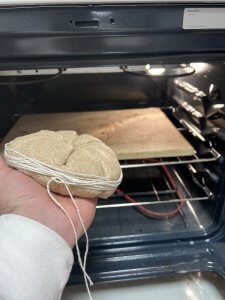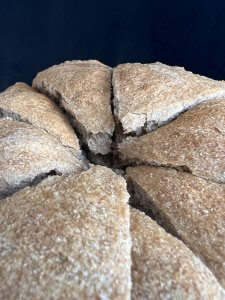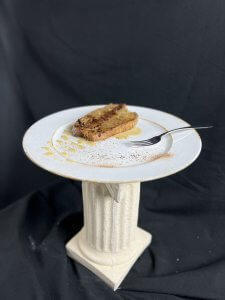Get ready to step into a time machine with Bucket of Bread as we journey back to ancient Rome to unravel the mystery behind the infamous Ides of March. You might be wondering, what does all of this have to do with our beloved bread bucket? Don’t worry, we’ll get to that. But first, let’s uncover the secrets of this fateful day that history books have preserved for centuries. So, sit back, relax, and let’s explore the past together!
What’s the Ides of March?
The Ides of March corresponds to the 15th of March on the ancient Roman calendar. In ancient Rome, people marked the Ides of March by celebrating several religious observances and festivals, and they had to settle certain debts and obligations such as paying taxes by this day.
However, the Ides of March gained most notoriety for its association with the assassination of Julius Caesar, one of the most powerful and influential leaders in ancient Rome. On March 15, 44 BC, a group of conspirators, including Caesar’s trusted friend Brutus, attacked Caesar and stabbed him to death in the Roman Senate.
The assassination of Julius Caesar was a pivotal moment in Roman history and marked the end of the Roman Republic and the beginning of the Roman Empire. The phrase “Beware the Ides of March” has become a popular saying and is often used to warn someone of impending danger or misfortune.
In modern times, people still recognize the Ides of March as an important historical and cultural event. They’d commemorate it in various ways, including through literature, art, and theater. For example, William Shakespeare’s play “Julius Caesar” includes the famous line “Beware the Ides of March,” and many performances of the play take place on or around March 15th.
“Et tu, Brute?”
The last words spoken by Julius Caesar before he died are not entirely clear, as different historical sources give different accounts. However, the most commonly cited version of his last words comes from the Roman historian Suetonius, who wrote that as Caesar realized Brutus was among the assassins, he exclaimed “Et tu, Brute?” which translates to “You too, Brutus?”
According to this account, Caesar was deeply shocked and hurt by the betrayal of his friend and ally Brutus, who had been one of his closest confidantes. The phrase “Et tu, Brute?” has since become famous and often used to express surprise or disappointment at the betrayal of a friend.
It’s worth noting that other sources give slightly different versions of Caesar’s last words. For example, the Roman historian Plutarch wrote that Caesar simply exclaimed “You also, my child?” when he saw Brutus among the assassins. Regardless of the exact wording, the death of Julius Caesar was a pivotal moment in Roman history and has continued to captivate people’s imaginations for centuries.
Bread of Rome
The Panis Quadratus was a beloved bread among ancient Romans, especially during the Republican era (509-27 BC). This bread was square-shaped, making it easy to recognize. Ancient Romans made their bread from wheat flour, water, and salt before baking it in a wood-fired oven. The ancient bakers would divide the dough into small pieces and flatten them into squares, which they would stamp with their mark before baking. As a result, the bread was dense, slightly chewy, and boasted a unique flavor that was highly valued by the Romans.
Panis Quadratus played a significant role in the food culture of ancient Rome and was distributed during various festivals and religious ceremonies. Furthermore, it served as a form of currency, allowing people to trade or barter for it.
Although some bakeries in Rome still bake and sell Panis Quadratus today, it’s not as widely consumed as it once was. Nevertheless, it remains a crucial symbol of Roman culinary history and culture, showcasing the ingenuity and resourcefulness of ancient Roman bakers.
But what about round shaped bread?
While the Panis Quadratus bakers typically made square-shaped bread, historical evidence suggests that round loaves were also common in ancient Rome. Archaeological excavations in Pompeii, an ancient Roman city near modern-day Naples, have unearthed examples of both square and round loaves.
The round shape may have been a variation on the traditional square shape or used for specific purposes or occasions. Some historians suggest that ancient populations used round loaves as offerings in religious ceremonies or rituals, while square loaves were the everyday staple food.
It’s important to note that bread-making techniques and traditions varied based on the region, time period, and social status of the consumers. As such, considering the size of the Roman Empire at various times throughout history, the people of the time consumed different shapes and even types of various breads. The round loaves found in Pompeii may have been specific to that region or time period and may not be representative of the bread consumed throughout ancient Rome.
Is there a cookbook?
Absolutely! The Apicius collection comprises Roman recipes compiled in the late 4th or early 5th century AD. The collection derives its name from Marcus Gavius Apicius, a wealthy gourmet who lived during the reign of the emperor Tiberius (14-37 AD). While it’s not entirely clear whether Apicius himself wrote the collection, historians generally believe it to be a compilation of popular recipes from his time.
The Apicius collection consists of 10 books, each containing diverse recipes for various types of dishes. The recipes use a wide range of ingredients, including meats, fish, vegetables, fruits, and sauces, soups, stews, and even desserts.
One of the most interesting aspects of the Apicius collection is the diverse range of flavors and ingredients employed in ancient Roman cuisine. Certain recipes require expensive, exotic spices like cumin, coriander, and saffron that traders imported from distant lands. Other recipes use more common ingredients such as garlic, onions, and herbs to add flavor to the dishes.
The Apicius collection is also remarkable for its use of various cooking techniques, such as roasting, boiling, and frying. Some of the recipes even include guidelines for utilizing specialized cooking equipment, such as spit roasts and earthenware pots.
Currently, the Apicius collection is a significant resource for historians and chefs who are interested in ancient Roman cuisine. Although some of the recipes may seem strange or exotic to present-day tastes, they offer an intriguing insight into the culinary customs of one of the most potent and influential empires in history.
Who found the Apicius?
The discovery of the Apicius collection of recipes remains shrouded in mystery and lacks clarity. Although historians estimate sometime in the late 4th or early 5th century AD recipes were collected for Apicius, its actual authorship and preservation over time are not fully known.
The earliest surviving manuscript of the Apicius collection dates back to the 9th century AD and was discovered in the library of the Abbey of Fulda in Germany in the late 19th century. This important manuscript now sits at the Vatican Library in Rome.
It’s highly possible other manuscripts of the Apicius collection existed prior to the discovery of the Fulda manuscript. For example, there are references to an “Apicius” in the writings of several ancient Roman authors, including Pliny the Elder and Apuleius. It’s not clear if these references are to the same collection of recipes that is now known as the Apicius collection, but they suggest that the collection may have been well-known in ancient Rome.
In any case, the discovery of the Apicius collection has been incredibly valuable for historians and food enthusiasts alike, as it provides a fascinating glimpse into the culinary traditions of ancient Rome. The collection continues to be studied and appreciated to this day as a testament to the enduring legacy of Roman cuisine.
Recipe for Aliter Dulcia
The “Recipe for Aliter Dulcia” is a culinary text that dates back to the Roman Empire, specifically the 4th or 5th century AD. The title translates to “Another Sweet Dish” in Latin, and the document is essentially a collection of recipes for sweet desserts and dishes. Professional chefs and wealthy households likely used the references found in the collection, likely compiled over several centuries.
Nobody knows who the author for the “Recipe for Aliter Dulcia” itself is. It contains 11 recipes for sweet dishes. Some of the ingredients used in the recipes include honey, almonds, dates, raisins, and a variety of spices.
One of the most interesting aspects of the “Recipe for Aliter Dulcia” is that it provides insight into the culinary habits and preferences of the ancient Romans. For example, the use of spices and sweeteners like honey was common in Roman cuisine, and the recipes often feature ingredients that were expensive or difficult to obtain, such as exotic fruits and nuts.
While there are similarities between aliter dulcia and modern-day French toast, it’s unclear whether French toast actually originated from this ancient Roman dish. The origins of French toast are not well-documented, and there are similar dishes in other cultures, such as the German “Arme Ritter” or the Spanish “Torrijas.” It’s possible that French toast has multiple cultural influences, including ancient Roman cuisine, but the exact origin is not definitively known.
Still, the “Recipe for Aliter Dulcia” is an important document for understanding the history of cuisine in the Roman Empire and provides a glimpse into the culinary traditions and techniques used during the time.
Examples from the collection are:
The following are just two examples of the types of sweet dishes that are included in the “Recipe for Aliter Dulcia.” Other recipes in the collection include almond cookies, spiced raisin pudding, and a type of custard called “patina.” Bucket of Bread has not tested these two yet. If you make them, send in a message on what you thought. Or, have your friends send enough requests and Bucket of Bread will create a Bucket Recipe based off these:
Bonus Recipe 1: “Sweet Wine Biscuits”
Ingredients:
- 1 cup sweet wine
- 1 cup honey
- 1 cup oil
- 2 cups flour
- 1 tsp ground pepper
- 1 tsp ground coriander
Instructions:
- Preheat oven to 350°F.
- In a large mixing bowl, combine the sweet wine, honey, and oil.
- Add the flour, pepper, and coriander, and stir until a dough forms.
- Roll the dough into small balls and place them on a greased baking sheet.
- Bake for 15-20 minutes, or until golden brown.
Bonus Recipe 2: “Date Pudding”
Ingredients:
- 1 cup pitted dates
- 1 cup honey
- 1/2 cup milk
- 3 eggs
- 1/2 cup flour
- 1/4 cup melted butter
- 1 tsp ground cinnamon
- 1 tsp ground ginger
Instructions:
- Preheat oven to 350°F.
- In a blender or food processor, puree the dates and honey until smooth.
- Add the milk, eggs, flour, melted butter, cinnamon, and ginger, and blend until well combined.
- Pour the mixture into a greased baking dish and bake for 30-40 minutes, or until set.
The Ides of March is a significant date in ancient Roman history, marked by both celebration and tragedy.
While the date is most famous for its association with the assassination of Julius Caesar, it’s also a reminder of the rich culinary traditions of ancient Rome, which included dishes such as the Panis Quadratus and the various breads and cakes found in the Apicius manuscripts.
In honor of the Ides of March, we are reminded of the enduring legacy of Roman cuisine and the importance of preserving and celebrating the culinary traditions of the past. By bringing ancient recipes to life and sharing them with modern audiences, we can connect with the people and cultures that came before us and gain a greater appreciation for the rich and diverse history of our world. So let us raise a toast to the Ides of March and the culinary treasures of ancient Rome!

Aliter Dulcia: Ancient Roman Recipe to Celebrate the Ides of March with Bonus Recipes from the 4th Century!
Bucket of BreadEquipment
- 1 Spool Baking twine If you can find untreated garden twine that is a little thicker, this may work too; however, keep an eye on your oven as it may ignite. This item is also completely optional as you'll see the more you get into the recipe.
Ingredients
- 1 Bucket Bucket of Bread Hearty Wheat
- 1 Cup Milk Optional: Let's use Buttermilk!
- 3 Eggs Large
- 1 Tbsp Honey
- 1/4 tsp Cinnamon
- 1/4 tsp Ground Black Pepper
- 1 Tbsp Olive Oil
Instructions
Let's make some bread in the spirit of the Roman way. So, preheat the oven to 450° F.
- Make a Bucket of Bread brand baking mix from the Hearty Wheat without using the honey added option and pull off a nice amount that rests on the lid (pictured is 800 g).

- Smash it using the lid.

- Form up the sides. You're looking to get it at no more than an inch thick.

- Use twine or rope to secure the sides. The breads found in Pompeii had such an indentation circling the loaves likely from a thicker rope.

- Score the loaf into 8 pieces. Originally this was most likely done with some sort of tool that looked similar to a wagon wheel. Here, we're just using the back of a knife.

- Also, for some reason, the Pompeii loaves had a big indentation right in the middle of it. So, let's use our thumb.

- Rather than use parchment paper and a baking sheet, let's just use a baking stone to represent hot stone ovens of the past.

- Let the loaves cool completely.

- The breads discovered at Pompeii were round and looked as if they were separated into 8ths. During baking there was a nice rise so the pieces were cut for serving.

- Delicious with some honey.

BUT, let's use the left overs for the Aliter Dulcia!
- Gather up your ingredients with some 1-2 day old bread from Bucket of Bread Hearty Wheat made to look like the bread of Pompeii.

- Cut the bread into thick slices.

- In a mixing bowl, whisk together the milk, eggs, honey, cinnamon, and pepper.

- Dip the bread slices into the mixture, push on the bread to soak up the bath like a sponge.

- Make sure to coat them well enough to soften up the crust a little.

- Heat a frying pan over medium heat and add olive oil to coat the bottom.

- Place the bread slices in the pan for several minutes.

- Cook each side until you reach the desired browned coloring.

- Drizzle with honey dusted with more cinnamon and a pinch of pepper.

- Serve hot.

- WOW! The taste for this is so much better than regular old, "French Toast". This is the way from now on!!! Enjoy!

While the dish involves dipping bread in a mixture of milk and eggs before frying, it also includes honey, cinnamon, and pepper, which gives it a unique flavor profile that is different from modern French toast. Nonetheless, it’s interesting to see the similarities and differences between ancient and modern cuisines.
Video
Notes
Interested in a Collaboration?
Send a quick message so we can chat about how you can get a recipe named after you, your business, or your cause. Also, receive back links to your URL directly from the Bucket of Bread recipe pages!



